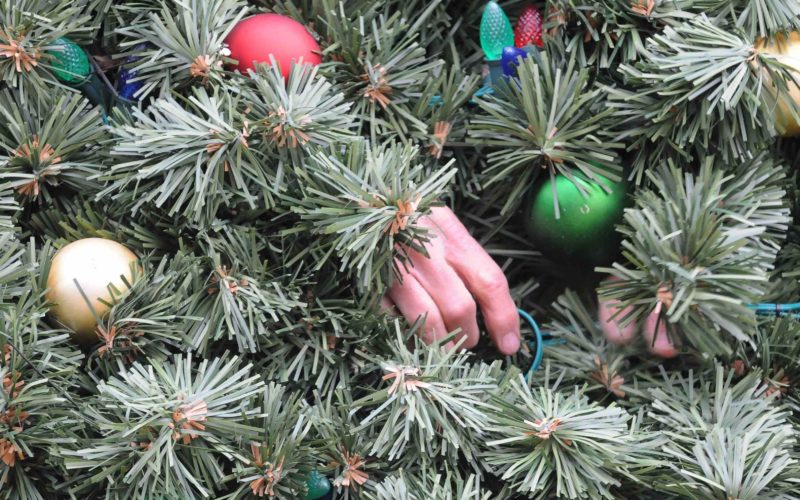Christmas tree can keep on giving after holiday
AMANDA BANCROFT
Making Ripples
There are a variety of ways to avoid the post-holiday gloomy appearance of the discarded Christmas tree awaiting disposal on the curb or in a dumpster. Many people get cut trees and use them as a brush pile for wildlife seeking shelter in their backyards during the winter. But another approach is to get a live tree and celebrate the season by enjoying it all year ‘round after it’s planted!
The kids might name it as a living memento of this Christmas that could grow up with them. Naturally, this requires the space to plant it, and not everyone will have that. Another question is whether one should plant a non-native tree. Native trees fit our ecosystem because they evolved here and are adapted to local conditions. They require less care while also supporting local species. Yet to plant a tree is a good thing, especially if it’s a type of non-native tree which is unlikely to negatively impact the surrounding environment. Research the tree you’d like to plant to make sure you know the up-sides and down-sides and can effectively manage its care. Contact a nursery near you to see if they have live trees available.
White River Nursery on Huntsville Road in Fayetteville offers live trees that people do buy, decorate and plant after the holidays. The cost is anywhere from $9 for a 1 gallon loblolly or shortleaf pine (both native) up to $250 for the larger trees. The pines resemble the “Charlie Brown tree,” if you’re hoping to bestow love and cheer upon something this season. Another native option is the Eastern Red Cedar, but be warned it has a tendency to be invasive and spread into fields and glades. White River also has Dwarf Alberta Spruces and Colorado Blue Spruces that hold Christmas ornaments in a similar way as Douglas and Frasier firs do, but as their names suggest, Alberta and Colorado spruces aren’t native to Arkansas. It also depends on your definition of native for this purpose: the American Holly is native to the southeastern states but doesn’t really grow in Northwest Arkansas. It provides attractive color and food for wildlife, though. The junipers are related to cedars, so while not exactly native, they’re closer. If you have small ornaments, you might choose a native non-evergreen to plant instead.
If you get a live tree for planting outdoors later, don’t keep it inside for longer than about two weeks. It can get too comfy and accustomed to stable indoor temperatures and be shocked at the cold once planted outside. The tree can also come out of dormancy while it’s in your home, but to survive winter, it needs to remain dormant. You might keep it on a balcony or porch and decorate it there for all to see. Keep the root ball moist using ice cubes or daily watering. Choose a planting space that takes into consideration the tree’s mature height and breadth of branches.
Another option is to decorate an outdoor tree near your home. Instead of the usual indoor ornaments, which can be treasures easily broken and could harm wildlife, make seed ornaments for birds using safe, natural materials. Dip pine cones in peanut butter and roll them in birdseed, then hang from branches using natural twine. You could still wrap the tree in a string of outdoor-rated Christmas lights if you want. Happy decorating!
Amanda Bancroft is a writer, artist, and naturalist living in an off-grid tiny house on Kessler Mountain. She and her husband Ryan blog about their adventures and offer tips to those wanting to make a difference at www.MakeRipples.org.










